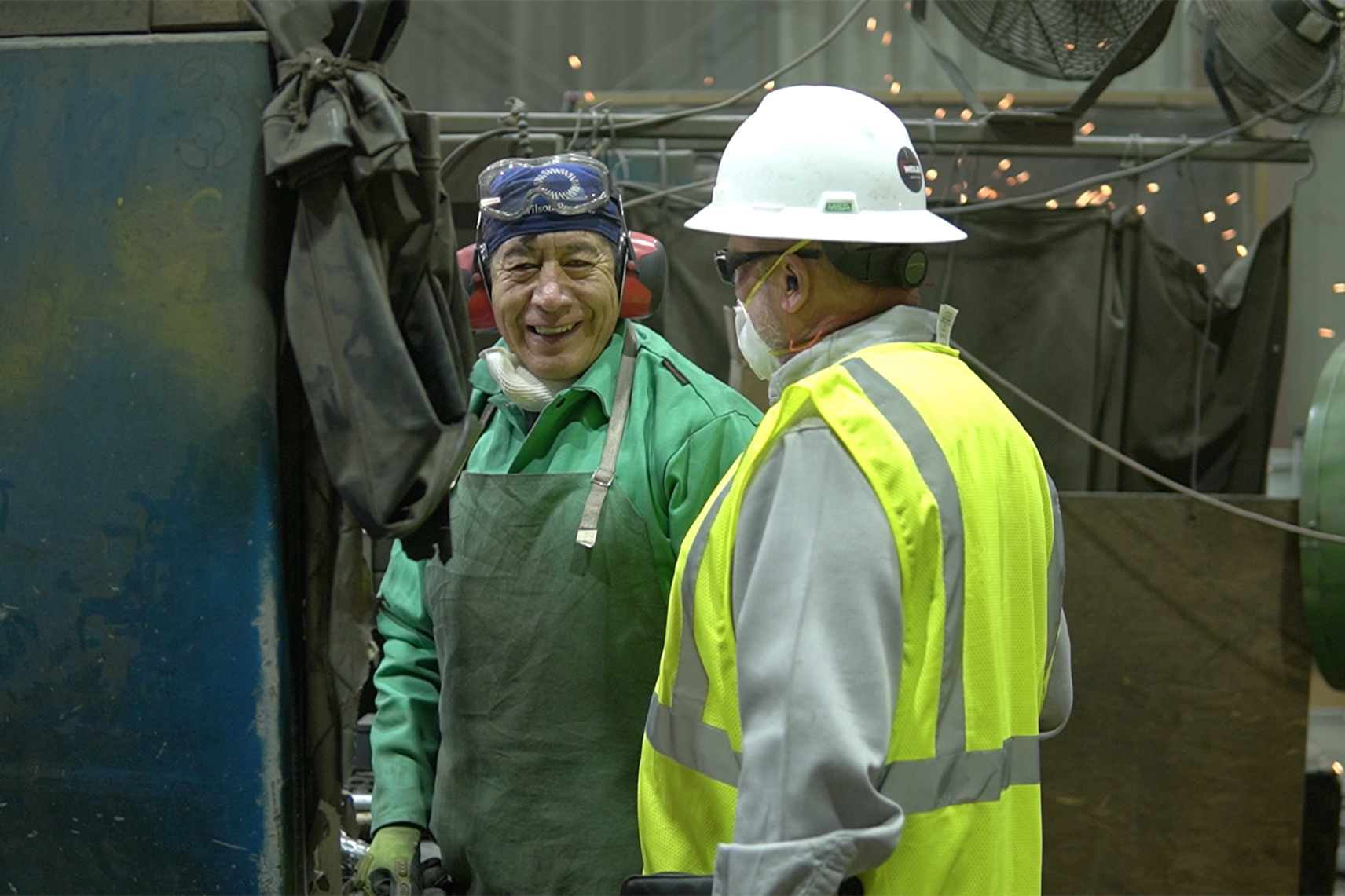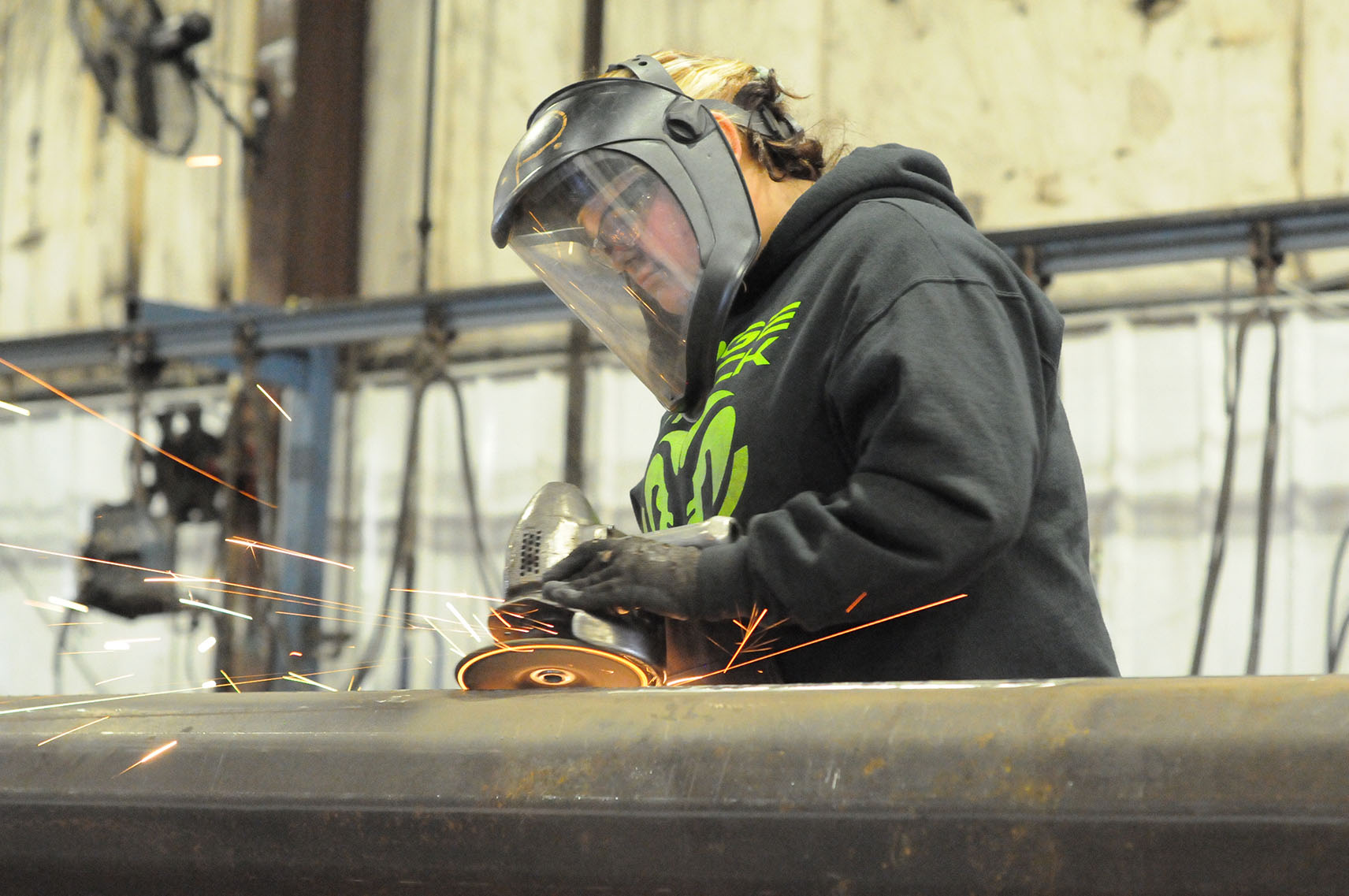Selecting Abrasive Products to Improve Throughput and Offset Labor Shortages

Selecting Abrasives Products to Improve Throughput and Offset Labor Shortages
By Justin Maynard, Technical Sales Manager, Weiler Abrasives
 A “help wanted” sign is a common reality today at many manufacturers and general fabrication shops. But while there is enough demand to hire workers for several positions — perhaps even for a whole added shift — the metal fabrication industry’s ongoing labor shortage makes filling jobs difficult.
A “help wanted” sign is a common reality today at many manufacturers and general fabrication shops. But while there is enough demand to hire workers for several positions — perhaps even for a whole added shift — the metal fabrication industry’s ongoing labor shortage makes filling jobs difficult.
In addition, businesses need skilled employees who can hit the floor running and make an immediate impact on production. There typically isn’t time to train workers who aren’t skilled in metal fabrication.
These labor issues are affecting productivity in many shops. As a result, operations may reduce throughput, extend project deadlines or even turn down some jobs.
Choosing the right abrasive products for metal cutting and finishing work, however, can help you save significant time and improve throughput — even in the face of labor challenges.
Impact of Abrasives on Productivity
Abrasive products used for metal preparation and finishing may seem like a small part of your operation. For that reason, companies are often tempted to choose abrasives based solely on the lowest purchase price. But there are pitfalls to this approach.
Buying less expensive abrasives can actually cost much more in the long run. That’s because lower-quality abrasives often deliver reduced performance and a slower cut rate — taking more time to get the job done and adding additional labor time in the process. They also typically have shorter product life and require more frequent changeover, resulting in more operator downtime. In addition, lower-quality products may vibrate more during use, increasing operator fatigue and discomfort and potentially leading to lost time, not to mention the added wear and tear on tools and possibility of repetitive-use injuries.
Higher-quality abrasives typically have a higher acquisition cost, but they can deliver significant benefits for productivity and efficiency that end up saving money over time. These benefits include longer product life, less frequent changeover, better aggression and material removal rate, and less vibration for greater operator comfort.
As a general rule of thumb, the thicker the material and the higher the material removal rate, the greater the benefits of using a higher-quality abrasive will be for your operation. In applications where greater force and aggression are required, it’s easy to wear out the wrong abrasive quickly.
Common Abrasive Grains and Their Differences
There are several factors to consider in choosing the right abrasive product for the application so your operations can get more done in less time — and with less labor. It’s important to match the rated speed and size of the grinder to the rated speed and size of the cutoff wheel or grinding wheel. Understanding the material and how it acts during cutting and grinding will provide direction regarding the optimal abrasive grain and product design for a given application. The base material thickness and removal rate needed also play key roles in choosing the right product design and grain.
rated speed and size of the grinder to the rated speed and size of the cutoff wheel or grinding wheel. Understanding the material and how it acts during cutting and grinding will provide direction regarding the optimal abrasive grain and product design for a given application. The base material thickness and removal rate needed also play key roles in choosing the right product design and grain.
Different abrasive grains provide different levels of performance due to their physical characteristics. Grain toughness speaks to durability while a sharper, less tough shape may help cut hard-to-grind material better than a durable, blocky shape. Below are some grains commonly used for resin-bonded abrasives.
- Ceramic: Abrasives made with ceramic grains have a higher acquisition cost. Ceramic abrasives deliver the highest performance and help work get done faster, often making them the best value. They provide more efficient cutting action and generate less heat in the grind zone, which greatly benefits productivity. In addition, more efficient grinding generates less friction and vibration for improved operator comfort, which also equals more productivity in the shop. These abrasives work especially well on metals that are more difficult to grind, including stainless steel and heat-treated steels.
- Zirconia: A zirconia blend abrasive is durable and provides long product life. This grain is the workhorse of the abrasives industry, performing well in high-pressure applications where other grains dull quickly. It can be used on mild steel and will hold up to rough cutting and heavy, high-pressure, high-horsepower applications that produce a lot of heat. Avoid using a hard zirconia grain on aluminum, which is a softer metal. The bond is too hard for aluminum and the abrasive will load easily.
- Aluminum oxide: An AO blend abrasive will efficiently cut soft aluminums without loading or glazing. This grain is also a good choice for mild steel, providing value, a fast cut rate and consistent performance.
- Silicon carbide: This grain works well for non-ferrous applications, such as brass or aluminum.
Testing Different Grain Types
A product conversion can yield significant results — even without jumping to the highest-quality abrasive available. For example, going from an inexpensive, baseline aluminum oxide wheel to a higher-quality zirconia product is a good start.
Ceramic is often the highest-performing abrasive grain. Operations currently using aluminum oxide or zirconia should consider testing a ceramic abrasive to see what results they can attain, especially if they are looking to get more work done in the face of labor shortages. These products can help minimize bottlenecks in the operation.
Companies can conduct a cost analysis to determine cut-off wheel and grinding wheel costs, a process that is made easier by working with abrasives experts. The process doesn’t have to interrupt production or take up time at facilities. Bringing in abrasives experts to lead this process and test products removes the burden from manufacturing operations. Abrasives experts bring extensive product knowledge and industry experience. This allows them to study the data and quickly identify the best abrasive for the specific situation while considering all possible factors, including material, application, tools, how the product is being used and more.
The Weiler Consumable Productivity Program is offered by Weiler Abrasives at no cost to any operation, regardless of size. It evaluates, measures and compares wheel performance and calculates the true cost of abrasives for any applications or operations. It also provides information to determine the efficiency of current wheels.
Through real-life testing, users can compare product life, cycle times, cutting rate, cutting index, material costs (initial wheel price) and labor costs between different wheels used on the same materials and same tools with the same parameters.
 Addressing Labor Challenges with the Right Abrasives
Addressing Labor Challenges with the Right Abrasives
When an operation has a smaller pool of skilled labor to get work done, efficiencies must be found elsewhere to make up for it. Using the fastest-cutting and most efficient off-hand abrasive tools for metal preparation, cutting and finishing can help save significant time and money.
Choosing the best abrasives for your application can be difficult but leveraging the expertise of your local manufacturing representative can help you get the answers you need — even in just a single site visit. Bringing in a manufacturing rep can help operations plan for current and future projects. Additionally, spending time with your local manufacturing reps will keep you up to date on new technology designed to optimize your projects and applications.
Justin Maynard - TECHNICAL SALES MANAGER
